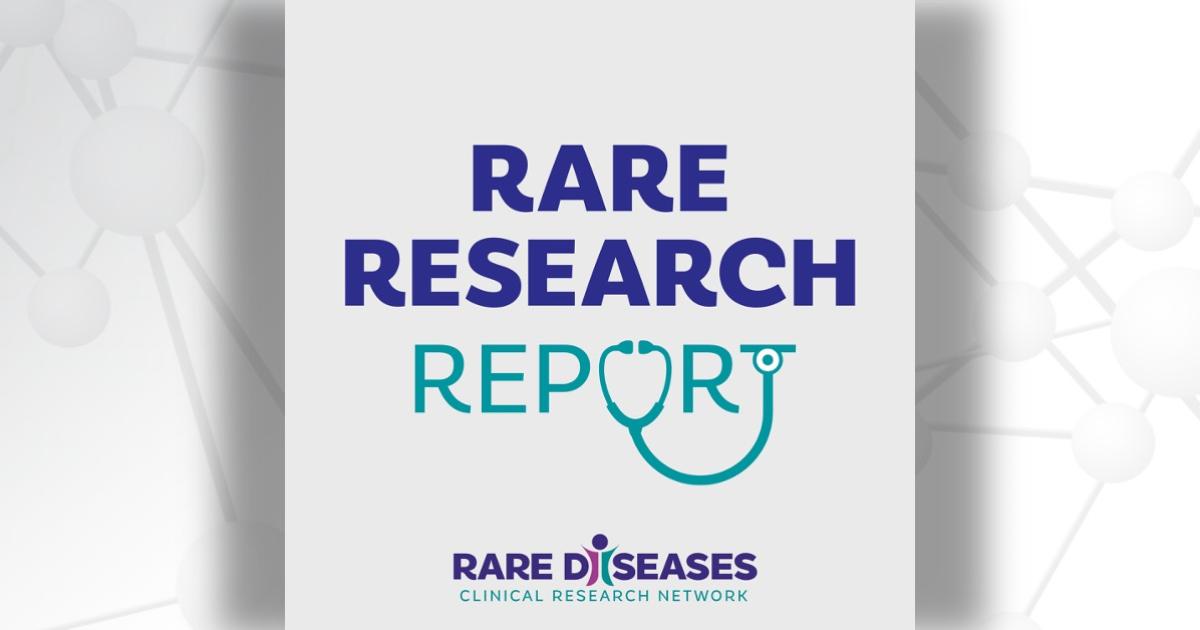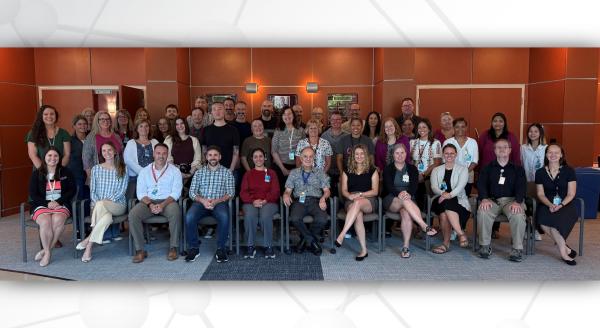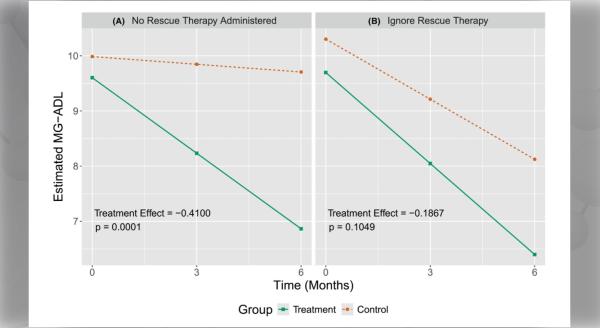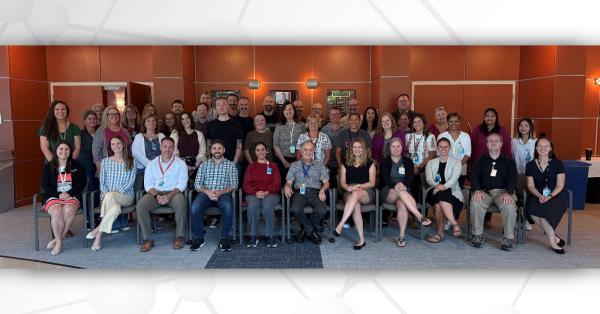Each month, we share summaries of recent Rare Diseases Clinical Research Network (RDCRN) grant-funded publications. Catch up on the latest RDCRN research below.
Jump to:
- Brittle Bone Disorders Consortium (BBDC)
- Frontiers in Congenital Disorders of Glycosylation Consortium (FCDGC)
- Genetic Disorders of Mucociliary Clearance Consortium (GDMCC)
- Myasthenia Gravis Rare Disease Network (MGNet)
- Nephrotic Syndrome Study Network (NEPTUNE)
- North American Mitochondrial Disease Consortium (NAMDC)
- Urea Cycle Disorders Consortium (UCDC)
Listen to these summaries on the Rare Research Report podcast.
Brittle Bone Disorders Consortium (BBDC)
Evaluating Pain Characteristics in Patients with Osteogenesis Imperfecta
Osteogenesis imperfecta (OI) is a group of rare, inherited disorders caused by gene mutations resulting in fragile bones that break easily. Symptoms include skeletal and joint deformities, hearing loss, a bluish tint to the sclerae (whites of the eyes), dental problems, respiratory problems, and chronic pain.
In this study, researchers aimed to describe pain characteristics and treatments used in individuals with varying severity of OI, as well as investigate variables associated with pain. Using data from a natural history study of OI conducted by the Brittle Bone Disorders Consortium (BBDC), the team analyzed the prevalence, characteristics, treatments, and predictors of chronic pain.
Among 861 individuals with OI, results showed that 41.8% had chronic pain, which was most frequently located in the back. Predictors of chronic pain for all OI types included age, use of a wheelchair, and number of fractures per year. Compared to participants without chronic pain, participants with chronic pain missed more days from school or work per year and performed worse in all mobility metrics. The most common treatments were nonsteroidal anti-inflammatory drugs and bisphosphonates. These results show that chronic pain is prevalent in OI across all types, affects mobility, and interferes with participation.
Rodriguez Celin M, Kruger KM, Caudill A, Murali CN, Nagamani SCS, Members Of The Brittle Bone Disorders Consortium Bbdc, Smith PA, Harris GF. A multicenter study to evaluate pain characteristics in osteogenesis imperfecta. Am J Med Genet A. 2022 Oct 22. doi: 10.1002/ajmg.a.63009. Epub ahead of print. PMID: 36271817.
Frontiers in Congenital Disorders of Glycosylation Consortium (FCDGC)
MAN2A2 Enzyme Variant Causes New Type of Congenital Disorder of Glycosylation
Congenital disorders of glycosylation (CDG) are a large group of rare, inherited disorders that affect a complex process in the body called glycosylation. Defects in Golgi enzymes, which play a critical role in N-glycan processing and brain development, are often defined as types of CDG. However, defects in the Golgi enzyme MAN2A2 have not been known to cause defects in glycosylation.
In this study, researchers investigated the effects of variants in MAN2A2. In a family of affected individuals, the team performed exome sequencing, analyzed N-glycans, and designed a cell-based complementation assay to evaluate the disease-causing effects of the variant.
Findings show that variants in MAN2A2 cause a new type of CDG, which is characterized by neurological involvement and facial dysmorphism. Authors note that the cell-based complementation assay designed in this study can also help diagnose patients with potentially pathogenic variants in a very similar enzyme, MAN2A1.
Mahajan S, Ng BG, AlAbdi L, Earnest PDJ, Sosicka P, Patel N, Helaby R, Abdulwahab F, He M, Alkuraya FS, Freeze HH. Homozygous truncating variant in MAN2A2 causes a novel congenital disorder of glycosylation with neurological involvement. J Med Genet. 2022 Nov 10:jmg-2022-108821. doi: 10.1136/jmg-2022-108821. Epub ahead of print. PMID: 36357165.
Genetic Disorders of Mucociliary Clearance Consortium (GDMCC)
Primary ciliary dyskinesia (PCD) is an inherited, multisystem disease affecting the airways, sinuses, and middle ear that arises from dysfunctional cilia (hairlike structures). This in turn can lead to hearing loss, chronic cough, severe lung damage, and bronchiectasis (irreversible scarring and dilation of the bronchi). Patients with PCD have ranging disease variability and severity, with some clinical manifestations presenting soon after birth.
In this study, researchers evaluated the association between neonatal hospital length of stay and supplemental oxygen duration with lung function in pediatric PCD. They used data from a Genetic Disorders of Mucociliary Clearance Consortium (GDMCC) multicenter study consisting of 123 pediatric patients with PCD followed over 5 years.
Study results showed that neonatal hospital length of stay was associated with worse lung function, independent of age and ultrastructural defects. However, supplemental oxygen duration was not associated with lung function. These findings highlight the need for future research into the mechanisms and management of neonatal respiratory distress in PCD patients to better understand the variability in lung health outcomes in this patient population.
Wee WB, Leigh MW, Davis SD, Rosenfeld M, Sullivan KM, Sawras MG, Ferkol TW, Knowles MR, Milla C, Sagel SD, Zariwala MA, Pullenayegum E, Dell SD. Association of Neonatal Hospital Length of Stay with Lung Function in Primary Ciliary Dyskinesia. Ann Am Thorac Soc. 2022 Nov;19(11):1865-1870. doi: 10.1513/AnnalsATS.202202-116OC. PMID: 35657736.
Myasthenia Gravis Rare Disease Network (MGNet)
Critical Needs for Therapy Development in Myasthenia Gravis
Myasthenia gravis (MG) is a neuromuscular disorder caused by an autoimmune response which blocks or damages acetylcholine receptors in muscles. The US Federal Drug Administration (FDA) has approved complement and neonatal Fc receptor (FcRN)-inhibitors, a type of therapy for autoimmune diseases, for treatment of MG. Several other therapies are also in late stage clinical trials or under regulatory review. However, questions remain about which patients are most likely to benefit from which therapies and how effective the treatments will be.
In this review article, researchers discuss therapy development for MG, including the most critical needs for clinical trial readiness and biomarker development. Authors provide a summary of Myasthenia Gravis Rare Disease Network (MGNet) meetings held during the MG Foundation of America International Conference, where these topics were discussed.
Authors conclude with a series of recommendations to guide focused research in the most critical areas of therapy development for MG, welcoming ongoing discussion.
Benatar M, Cutter G, Kaminski HJ. The best and worst of times in therapy development for myasthenia gravis. Muscle Nerve. 2022 Nov 2. doi: 10.1002/mus.27742. Epub ahead of print. PMID: 36321730.
Myasthenia gravis (MG) is a neuromuscular disorder caused by an autoimmune response which blocks or damages acetylcholine receptors in muscles. A small number of individuals with MG have autoantibodies that target muscle-specific tyrosine kinase (MuSK), which is an enzyme that is crucial to the development and maintenance of the neuromuscular junction. Most patients with MuSK MG can experience remission with CD20-mediated B cell depletion therapy (BCDT). However, relapse is common.
In this study, researchers explored the factors that lead to relapse after BCDT in patients with MuSK MG. The team studied autoantibody-producing B cells over the course of BCDT, identifying MuSK-specific B cells from nine patients. Researchers isolated two MuSK-specific B cells from two patients who were experiencing relapse after BCDT. Next, the team explored the molecular properties of these B cells and collected longitudinal samples from the patients.
Findings showed that a reservoir of pathogenic, autoantibody-producing B cell clones survived BCDT and reemerged several months before relapse. Authors state that this study provides a better understanding of MuSK MG relapse, as well as a possible biomarker for relapse prediction.
Fichtner ML, Hoehn KB, Ford EE, Mane-Damas M, Oh S, Waters P, Payne AS, Smith ML, Watson CT, Losen M, Martinez-Martinez P, Nowak RJ, Kleinstein SH, O'Connor KC. Reemergence of pathogenic, autoantibody-producing B cell clones in myasthenia gravis following B cell depletion therapy. Acta Neuropathol Commun. 2022 Oct 28;10(1):154. doi: 10.1186/s40478-022-01454-0. PMID: 36307868; PMCID: PMC9617453.
Nephrotic Syndrome Study Network (NEPTUNE)
Investigating Factors Leading to APOL1-associated Kidney Disease
APOL1-associated kidney disease may be caused by two copies of risk variants in the APOL1 gene. However, the disease only occurs in some individuals who carry these variants. Kidney-damaging levels of APOL1 production may be activated by viral illnesses or other environmental factors.
In this study, researchers investigated the factors that lead to APOL1-associated kidney disease. The team found that a type of RNA modification called adenosine-to-inosine (A-to-I) editing—carried out by adenosine deaminase acting on RNA (ADAR)—suppressed APOL1 gene expression mediated by inflammatory pathways. Without ADAR editing, APOL1’s messenger RNA triggered inflammation.
These findings suggest that ADAR counters rapid production of APOL1 during acute inflammation. Authors note that this important process could impact the severity of APOL1-associated kidney disease.
Riella CV, McNulty M, Ribas GT, Tattersfield CF, Perez-Gill C, Eichinger F, Kelly J, Chun J, Subramanian B, Guizelini D; Nephrotic Syndrome Study Network (NEPTUNE), Alper SL, Pollak MR, Sampson MG, Friedman DJ. ADAR regulates APOL1 via A-to-I RNA editing by inhibition of MDA5 activation in a paradoxical biological circuit. Proc Natl Acad Sci U S A. 2022 Nov;119(44):e2210150119. doi: 10.1073/pnas.2210150119. Epub 2022 Oct 25. PMID: 36282916; PMCID: PMC9636950.
North American Mitochondrial Disease Consortium (NAMDC)
Review Paper Highlights Potential Therapeutic Strategies for Mitochondrial DNA Maintenance Defects
Mitochondrial DNA maintenance defects (MDMDs) are a group of disorders characterized by mitochondrial DNA (mtDNA) depletions and/or multiple deletions. These disorders most often affect the brain, liver, skeletal muscle, peripheral nerves, and gastrointestinal tract. As with other mitochondrial disorders, treatment options for MDMDs are currently limited.
Recent progress in MDMD research includes the development of model organisms, improved understanding of their pathophysiology, and a better knowledge of their natural history. This progress has led to an increasing number of preclinical studies, as well as existing and planned clinical trials.
In this review paper, researchers discuss current studies and trials, including potential new therapeutic options for MDMDs.
Almannai M, El-Hattab AW, Azamian MS, Ali M, Scaglia F. Mitochondrial DNA maintenance defects: potential therapeutic strategies. Mol Genet Metab. 2022 Sep-Oct;137(1-2):40-48. doi: 10.1016/j.ymgme.2022.07.003. Epub 2022 Jul 6. PMID: 35914366.
Urea Cycle Disorders Consortium (UCDC)
Use of Functional Near-infrared Spectroscopy in Urea Cycle Disorders and Phenylketonuria
Urea cycle disorders (UCD) and phenylketonuria (PKU) are two types of genetic, metabolic disorders characterized by neurological symptoms. As with many rare diseases, small population size can make these disorders challenging to study.
Tools such as functional neuroimaging are developed to help generate biomarkers, collect baseline data, and measure treatment effects in patients with neurological disorders. However, the cost and infrastructure requirements of these tools have limited their availability. To address this challenge, researchers and clinicians are developing new tools that are non-invasive, portable, and inexpensive.
In this review article, researchers discuss the use of functional near-infrared spectroscopy (fNIRS)—a non-invasive, portable tool that uses blood oxygenation to view the brain—in patients with UCD and PKU. Authors consider the ability of fNIRS to obtain biomarkers for screening and monitoring these diseases.
Khaksari K, Chen WL, Gropman AL. Review of Applications of Near-Infrared Spectroscopy in Two Rare Disorders with Executive and Neurological Dysfunction: UCD and PKU. Genes (Basel). 2022 Sep 21;13(10):1690. doi: 10.3390/genes13101690. PMID: 36292574; PMCID: PMC9602148.
The Rare Diseases Clinical Research Network (RDCRN) is funded by the National Institutes of Health (NIH) and led by the National Center for Advancing Translational Sciences (NCATS) through its Division of Rare Diseases Research Innovation (DRDRI). Now in its fourth five-year funding cycle, RDCRN is a partnership with funding and programmatic support provided by Institutes, Centers, and Offices across NIH, including the National Institute of Neurological Disorders and Stroke, the National Institute of Allergy and Infectious Diseases, the National Institute of Diabetes and Digestive and Kidney Diseases, the Eunice Kennedy Shriver National Institute of Child Health and Human Development, the National Institute of Arthritis and Musculoskeletal and Skin Diseases, the National Heart, Lung, and Blood Institute, the National Institute of Dental and Craniofacial Research, the National Institute of Mental Health, and the Office of Dietary Supplements.






